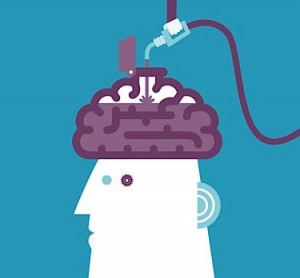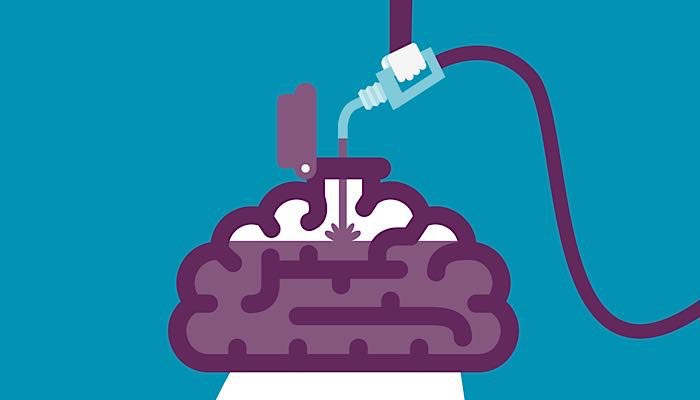
I want to challenge you with a problem that I am observing in the teaching and learning environments where journeyman technicians are or should be. A friend of mine, Jeff Peevy, is the president of the Automotive Management Institute, and he previously developed curriculum for I-CAR. Jeff boils education down to a very simple statement that should be pasted on every tool box and front door of shops across the country: “Knowledge equals competitiveness; learning then is the only source of sustainable, competitive advantage.” If you think about the power of that statement, you can tie back nearly every issue in our industry to it. I am going to focus on just a few as they affect those of us already making a living providing service to vehicle owners.
Did you know that when you stop learning new things you also forget the things you already knew? This chilling fact is an area of great concern for the technician population, which is getting a little older on average each year. I have personally witnessed excellent diagnostic technicians who have decided that they already know everything they need to know and begin to lose their “diagnostic processes” as new technologies enter their bays. They begin to rely upon pattern failure databases and the work of others as their exclusive means of solving problems. I saw this first-hand when an older tech asked me to help him diagnose a 2.9L Ranger that was “really hard.” This guy was well known as a go-to problem solver 10 or 12 years ago. He described the veritable parts store he had thrown at the vehicle to try to fix the issue, including several repeats. When I began to ask questions to get his diagnostic juices flowing, it was a little painful at first. We looked at a wiring diagram together because his problem sure sounded like a ground issue to me, and as we did, the memories began coming back. Was this because he had not worked on a 2.9L Ranger in a long time? While that is very likely, the root problem was that he had dropped his training hours per year from over 80 to an occasional scan of trade mags. If I did not see this in so many areas of the country as often as I do, I would not bring it up. With that said there are many guys and gals out there who are voracious learners, but they are not the majority.
 The brain as it turns out is a fairly flexible storage unit. It has a tendency to revise its wiring based upon use, or lack thereof. Let’s do a little example using a domestic vehicle problem that was so pattern-specific, I bet only the import crowd has heard of it: Start by thinking of the ‘80s, now move across your mental files to GM, now think about the TH125 transaxle. If you have worked on these transmissions, your brain should have made a first leap to torque converter lock-up solenoid failure. For you young guys, sorry about the reference — it might predate your birth. I chose something old for a reason. This piece of knowledge is made possible by your neural pathways. Neural pathways are like those well-traveled areas your dog runs back and forth between in your backyard. The more you repeat or “see” a problem, the more likely you are to have a hardwired path in your memory. These paths can dissolve if we ignore them or we do not light that part of our memory up with similar experiences that remind us to use that acquired knowledge.
The brain as it turns out is a fairly flexible storage unit. It has a tendency to revise its wiring based upon use, or lack thereof. Let’s do a little example using a domestic vehicle problem that was so pattern-specific, I bet only the import crowd has heard of it: Start by thinking of the ‘80s, now move across your mental files to GM, now think about the TH125 transaxle. If you have worked on these transmissions, your brain should have made a first leap to torque converter lock-up solenoid failure. For you young guys, sorry about the reference — it might predate your birth. I chose something old for a reason. This piece of knowledge is made possible by your neural pathways. Neural pathways are like those well-traveled areas your dog runs back and forth between in your backyard. The more you repeat or “see” a problem, the more likely you are to have a hardwired path in your memory. These paths can dissolve if we ignore them or we do not light that part of our memory up with similar experiences that remind us to use that acquired knowledge.
In another part of my life, I played guitar and sang for 25 years while making a living at it for about half of that time. When my techs have the big-hair-band music going in the shop, I frequently say, “I wish I had a dime for every time I played that song.” There were certain songs that were part of our set off and on for over 10 years. This meant on average, six repetitions a week for 50 weeks out of the year. The result is that I probably played some songs over 1,000 times. Given my industry involvement, I have not been playing guitar for many years, so I challenged myself before writing this piece to play some of those songs again. Most of it is gone. Music is process, like math, and it’s very visceral. Diagnostic work is a very similar discipline. The phrase, “Use it or lose it” is far more accurate than, “It’s just like riding a bike” when it comes to diagnostics.
The last observation I am going to make about learning relates to the quality of the information we store in those gray matter folds in our brain. Often, the things we have learned are incomplete or inaccurate, and result is the old adage of “garbage in, garbage out.” As a part of a group of teachers, one of our most common complaints is that journeyman techs have a very strong tendency to avoid anything they perceive might be “basic.” There is an unacceptable number of professional technicians who cannot demonstrate a knowledge of circuit resistance and how it affects the other two legs of Ohm’s law. Why is that? It goes directly to the way most of us learned electricity. We did not start with an understanding of the core rules that apply to a circuit. We found dim lights that were caused by loose wires or corrosion and fuses that blew because a wire was pinched between a body component, and we created incomplete neural pathways regarding how electricity behaves. Stand in front of a group of technicians and ask them what it means if a circuit’s voltage is high and what it means if it is low. We have failed them by allowing them to repair cars without this core knowledge. When you count the systems that do not have electricity involved in their service (go ahead I can’t think of one), you see that the majority of our industry is woefully ill-equipped to service 20-year-old cars let alone what is coming down the assembly line today.
I am not looking for you to send hate mail if you already know all of this stuff. If you truly do, you are also well aware that many of your peers do not. Encourage them to never stop learning, and remember, “Knowledge equals competitiveness; learning then is the only source of sustainable, competitive advantage.” n













